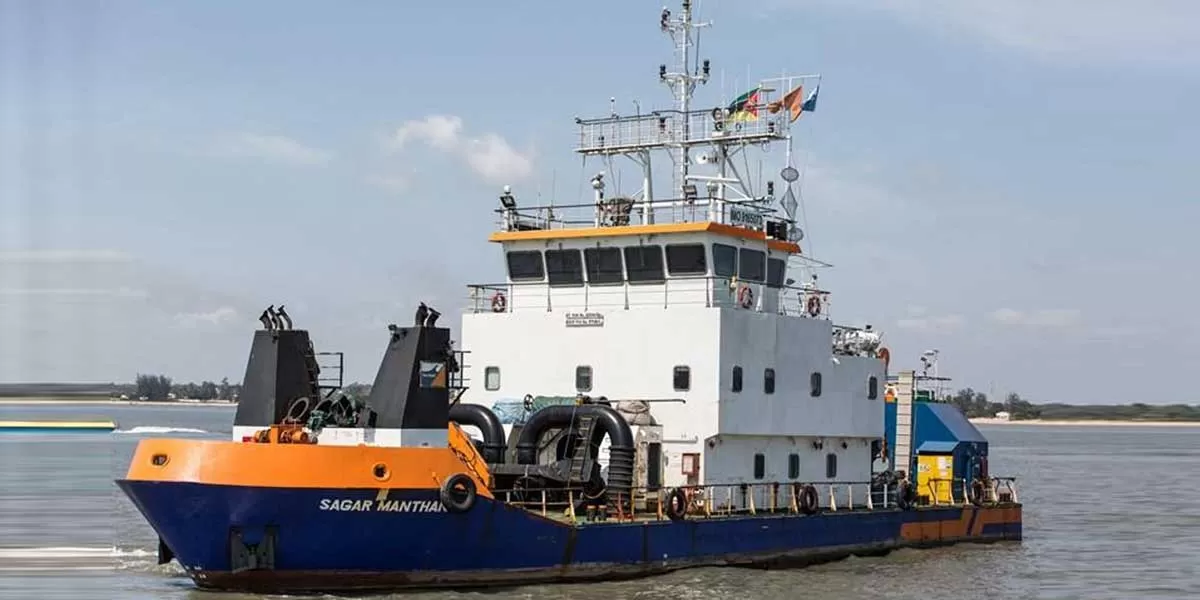India is embarking on a strategic initiative, Sagarmanthan, aimed at transforming the country into a leading maritime nation. The plan seeks to enhance India's shipping industry, port infrastructure, coastal development, and trade capabilities. Sagarmanthan envisions a holistic development of India's maritime sector by integrating sustainable practices, improving port capacities, and boosting coastal tourism. By fostering innovation and collaboration, the initiative aims to position India as a global maritime hub and strengthen its role in international trade.
Key Elements of Sagarmanthan:
Vision for Maritime Transformation: Sagarmanthan is designed to reimagine India’s maritime potential by addressing the entire ecosystem, from ports and shipping to coastal development and ocean resources. This comprehensive strategy focuses on both infrastructure expansion and sustainable growth, ensuring that India’s maritime sector evolves in alignment with global environmental standards.
Port Modernization and Expansion: The initiative includes a significant focus on modernizing India’s existing ports and expanding capacities. This will involve the use of cutting-edge technologies to improve operational efficiencies, reduce turnaround times, and enhance cargo handling capabilities. Port infrastructure upgrades will also prioritize energy efficiency and greener practices, helping India reduce its carbon footprint.
Sustainability and Blue Economy: Sagarmanthan integrates the principles of the Blue Economy, which emphasizes sustainable use of ocean resources for economic growth. The initiative aims to balance economic development with environmental stewardship, focusing on renewable energy projects such as offshore wind farms, marine biodiversity conservation, and sustainable fisheries. These efforts will help India become a leader in sustainable maritime practices.
Coastal Development and Tourism: Coastal development is another core pillar of Sagarmanthan. India’s vast coastline has immense potential for tourism, and the initiative seeks to tap into this by improving infrastructure for cruise tourism, beach resorts, and marine adventure activities. Coastal states will see focused investment in creating attractive tourism destinations, bolstering both the local economy and international tourism.
Boosting International Trade: With a strategic location along key international shipping routes, India aims to enhance its global trade presence through the Sagarmanthan initiative. Upgraded ports and more efficient logistics systems will enable faster and more reliable trade, positioning India as a central player in global maritime commerce. Furthermore, the initiative seeks to develop transshipment hubs, reducing reliance on foreign ports and keeping more trade activities within Indian waters.
Innovation and Technological Advancements: The Sagarmanthan initiative places a strong emphasis on technological innovation, recognizing the critical role of digitalization in maritime operations. Smart ports, powered by AI, IoT, and blockchain technologies, will ensure seamless port management and real-time cargo tracking. These innovations will significantly enhance India’s competitiveness in the global shipping industry.
Collaboration and Private Sector Involvement: A major aspect of Sagarmanthan is the encouragement of public-private partnerships (PPP) in the development of maritime infrastructure. By inviting private sector investments, India hopes to attract global expertise and financial support to accelerate the modernization of its maritime sector. Collaborative efforts will also extend to international partnerships, with India seeking to strengthen ties with other maritime nations.
Government Support and Policy Initiatives: The government of India is committed to providing a supportive policy framework for Sagarmanthan. This includes simplifying regulations, offering tax incentives, and creating special economic zones (SEZs) focused on maritime industries. These policies are aimed at encouraging both domestic and foreign investments, making the maritime sector more attractive to investors.
Challenges and Opportunities: While the Sagarmanthan initiative presents a robust vision for the future, it is not without challenges. India’s aging port infrastructure, environmental concerns, and the need for skilled manpower are among the hurdles that will need to be addressed. However, with concerted efforts from the government, private sector, and international partners, India has the potential to overcome these challenges and emerge as a key player in the global maritime domain.
Conclusion:
The Sagarmanthan initiative is a bold step towards reimagining India as a maritime powerhouse. By focusing on port modernization, sustainable development, and enhanced global trade capabilities, the initiative seeks to transform India’s maritime sector into a driving force for economic growth. As the country embraces innovative solutions and fosters international collaboration, Sagarmanthan could redefine India’s role in the global maritime landscape.





















